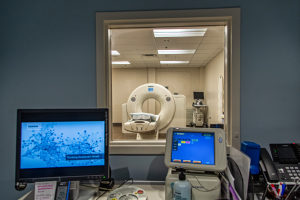With the school year quickly approaching and it’s time to get prepared, not just with clothes and supplies and introductions to the new teacher and classes, but with the knowledge to prevent contractible illnesses. When a student returns to the classroom, they’re susceptible to a variety of infectious diseases that spread quickly in group settings like their school. While this is a normal part of life, it’s important to know what these diseases are, how they are contracted, and ways to prevent them.
Below is a helpful guide outlining common infectious illnesses, their symptoms, how they spread, preventive strategies, and when emergency care may be needed:
- The Common Cold or the Flu: Very contagious, yet common illnesses.
- How does it spread? – Coughing or sneezing into open spaces where there are other people.
- How Can I Prevent? – Covering the mouth/nose area while sneezing or coughing, washing hands constantly, and avoiding individuals who are coughing or sneezing.
- What are the Symptoms? – Fever, coughing, sneezing, headache, chills, muscle aches, fatigue, intense sweating.
- What Does an Emergency Look Like? – Trouble breathing, chest pains, severe pain or weakness, gray or blue lips/nail beds, no tears when crying, dry mouth, regular symptoms become more severe.
- Pink Eye (Conjunctivitis): an infection that affects the eye, causing irritation and redness.
- How does it spread? – close personal contact, contact with droplets from infected coughs or sneezes, touching objects or surfaces with germs on them, or touching your eyes before washing your hands.
-
-
- How Can I Prevent? – Wash hands often, avoid touching or rubbing your eyes with your fingers, and clean contact lenses properly (if applicable).
- What are the Symptoms? – Bloodshot, swollen, itchy, and burning eyes. Yellow or green discharge from the eyes. Sensitivity to light.
- What Does an Emergency Look Like? – Severe pain, vision changes (blurriness), or worsening symptoms.
-
- Strep Throat: An infection that attacks the throat, causing intense pain and other bodily symptoms.
-
-
- How does it spread? – coughing or sneezing without covering your mouth/nose in open spaces filled with other people. Touching things without washing your hands. Touching your mouth area without washing your hands.
- How Can I Prevent? – Wash your hands often, steer clear of other people with symptoms, avoid touching your face, and don’t share personal items.
-
- What are the Symptoms? – Sore throat, runny nose, high fever, and headache.
- What Does an Emergency Look Like? – Intensified, ongoing symptoms or potential rheumatic fever (if the condition isn’t treated properly, it can affect the heart, joints, brain, and skin. It could lead to potential permanent heart damage if left untreated.
- Stomach Flu (Virus): Not an illness, but a virus that’s highly contagious and causes many issues with the stomach.
-
- How does it spread? – The sharing of drinks, forks, knives, spoons, or food, contaminated food and water, and airborne droplets from coughing or sneezing.
- How Can I Prevent? – Wash your hands before and after eating, and steer clear of individuals with symptoms.
- What are the Symptoms? – Diarrhea, nausea, vomiting, loss of appetite, abdominal pain, and cramping.
- What Does an Emergency Look Like? – High fever, ongoing symptoms after four days, dehydration, blood in feces, or severe abdominal pain.

When Trouble Arises, You Can Count on Surepoint!
Understanding how these illnesses spread is the first step in preventing them. At Surepoint Emergency Center, we recognize that schools are the prime environments for the transmission of infectious diseases. If you suspect your child is showing signs of illness, don’t wait – visit your nearest Surepoint Emergency Center for prompt, expert care when your child needs it most!
Surepoint Emergency Center is a modern emergency medical facility open 24/7. As an alternative to the traditional hospital ER experience, we offer convenience and minimal wait time, along with highly-trained emergency medical staff and state-of-the-art equipment.
Our top priority is bringing high-quality emergency care, quickly and easily to your family. We are committed to making patients feel better faster in a comforting and compassionate environment.
Expert convenient care in your neighborhood.



References:
Centers for Disease Control and Prevention. (2024, August 19). When students or staff are sick. https://www.cdc.gov/orr/school-preparedness/infection-prevention/when-sick.html
Cleveland Clinic. (2025, June 26). Stomach flu. https://my.clevelandclinic.org/health/diseases/12418-stomach-flu#:~:text=Stomach%20flu%20usually%20spreads%20by,and%20then%20touching%20your%20mouth.
Emory Healthcare. (2024, June 24). Kids’ health: Common Back-To-School illnesses and injuries. https://www.emoryhealthcare.org/stories/wellness/kids-health-common-back-to-school-illnesses-and-injuries
Mayo Clinic Staff. (2025, January 28). Influenza (flu) – symptoms and causes. Mayo Clinic. https://www.mayoclinic.org/diseases-conditions/flu/symptoms-causes/syc-20351719#:~:text=For%20adults%2C%20emergency%20symptoms%20can,Ongoing%20dizziness.
Minnesota Department of Health. (2024, June 25). MN Dept. of Health. https://www.health.state.mn.us/people/childrenyouth/schoolhealth/infection.html



